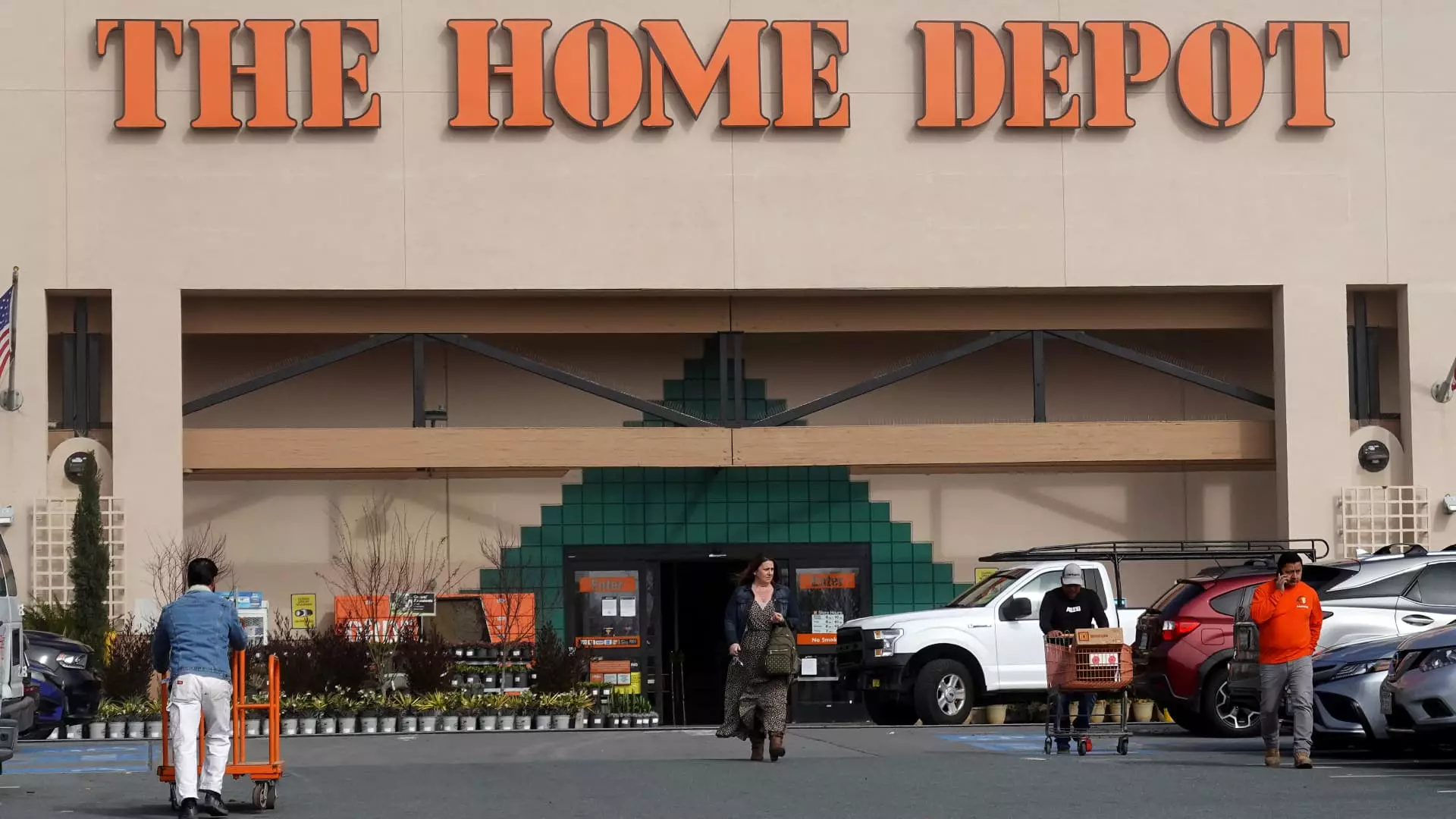As we delve into the complex ecosystem surrounding Home Depot, it’s evident that managing a retail giant in today’s fluctuating economic climate is like balancing on a tightrope. The iconic home improvement retailer kicked off its Memorial Day outdoor sales event, a move celebrated as a seasonal rite, especially for those of us with our gardening gloves in hand. Jim Cramer, often deemed a sage in investment insights, describes this phase as akin to “Christmas” for DIY enthusiasts. However, amidst the hype, we must scrutinize whether these promotional strategies genuinely resonate with consumer behavior or if they merely serve to perpetuate an echo chamber of short-term gains.
The retail landscape has significantly shifted in recent years, particularly as consumer preferences evolve and economic conditions fluctuate. Home Depot has made aggressive strides with discounts on not just plants and landscaping materials but also high-ticket items such as grills and patio furniture. These seasonal strategies aim to draw consumers into stores, but we must question if such tactics alone are sustainable. For the fiscal year ending in 2024, Home Depot recorded garden sales of approximately $20.83 billion. This figure represented a modest increase compared to previous years, only a testament to the retailer’s ability to adapt within an increasingly competitive market.
Potential Perils Ahead: The Role of Economic Indicators
While the growth in outdoor sales is encouraging, it’s critical to address the shadow cast by various economic indicators. Bernstein’s analysts have highlighted key variables such as unfavorable weather, weakened consumer sentiment, and variable performance among suppliers as sources of anxiety heading into what is traditionally Home Depot’s weakest quarter. These evaluations aren’t mere pessimism; they reflect a reality that could potentially dampen investor expectations, especially when forward guidance is anticipated to be conservative.
The upcoming earnings report is significant, especially as the consensus predicts revenue of $39.3 billion—a not-so-promising 8% growth over the previous year. On its face, this number appears optimistic, yet the looming risk of rising mortgage rates and continuing inflation could hamper retail growth. Cramer correctly posits that mortgage rates must decline below 6.5% to stimulate a more robust housing market, which is so intrinsically tied to Home Depot’s sales trajectory. As consumers hold on to their wallets, the question remains: will Home Depot’s strategic sales events create enough of a buzz to offset these economic drawbacks?
Looking Beyond the Numbers: The Human Element
Equally crucial is the human element behind Home Depot’s numbers—the contractors and tradesmen who are vital to the DIY renaissance. Recent surveys from Morgan Stanley indicate an encouraging return to demand for larger projects, hinting at a potential resurgence in construction as federal rate cuts loom on the horizon. This optimism can ripple through to Home Depot as more ambitious home improvement initiatives require access to quality materials, driving traffic and therefore revenue to the store’s aisles.
However, one must wonder if this latent demand for projects is enough to steady the ship. If consumers are tightening their budgets, will they still view Home Depot as the go-to destination for those larger purchases? The recent uncertainty surrounding tariffs and their potential impacts on pricing adds another level of complexity, which complicates straightforward assessments of Home Depot’s health and growth potential. The most successful retailers manage to ride the waves of economic change with strategic foresight, and thus far, Home Depot’s leadership under CEO Ted Decker has exuded confidence in navigating these challenges.
Investor Sentiment: The Contrasts in Stock Performance
At a time when investor sentiment is crucial, Home Depot’s shares have faltered, down approximately 2.5% year-to-date, in contrast to the relative stability of the S&P 500. While stock fluctuations are a normal part of market dynamics, it’s the underlying reasons that merit examination. Home Depot’s shares are not merely tied to seasonal sales; they are influenced by the broader economic environment that encompasses housing turnover and consumer behavior.
Cramer’s perspective is one worth consideration; he believes in Home Depot’s potential amid grave economic challenges. Still, investors must remain vigilant, keenly aware of how both macroeconomic factors and market sentiment are intricately woven into the success of Home Depot. As the markets continue to evolve, the path forward for Home Depot may require not only proactive strategies but also a genuine understanding of consumer behavior and its linkage to economic realities. Without this insight, even the most handsome discounts and innovative marketing efforts could yield diminishing returns.
As we observe the unfolding narrative of Home Depot, it is essential to pursue a greater understanding of how economic forces, seasonal trends, and consumer sentiment interact dynamically to shape the future of this retail giant. The opportunity for growth exists, but it demands adaptability and foresight in navigating both market trends and economic challenges.

